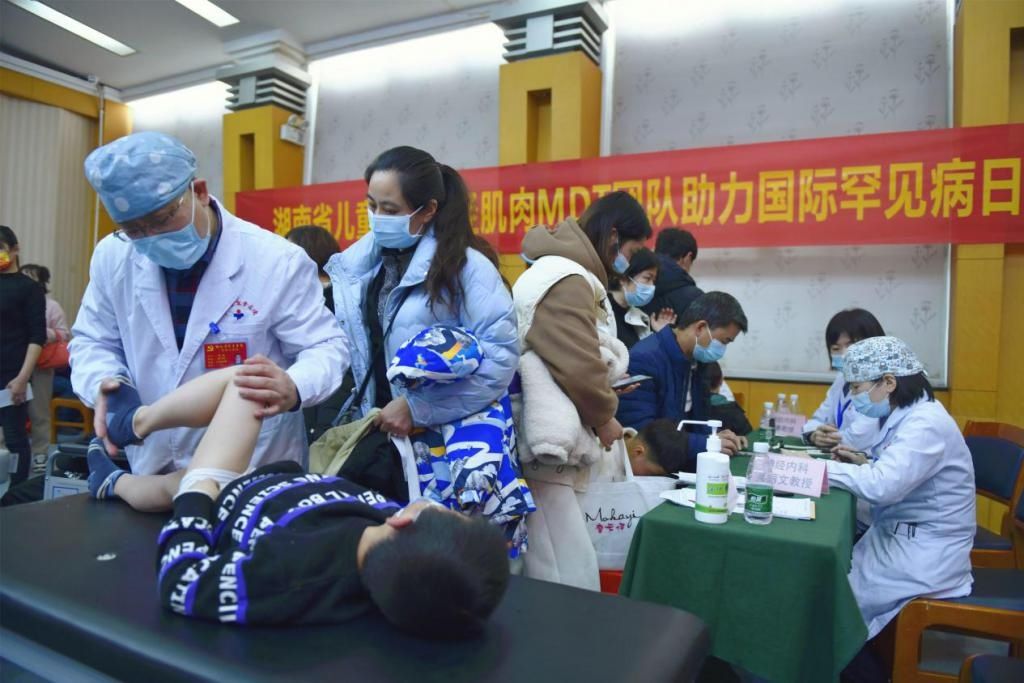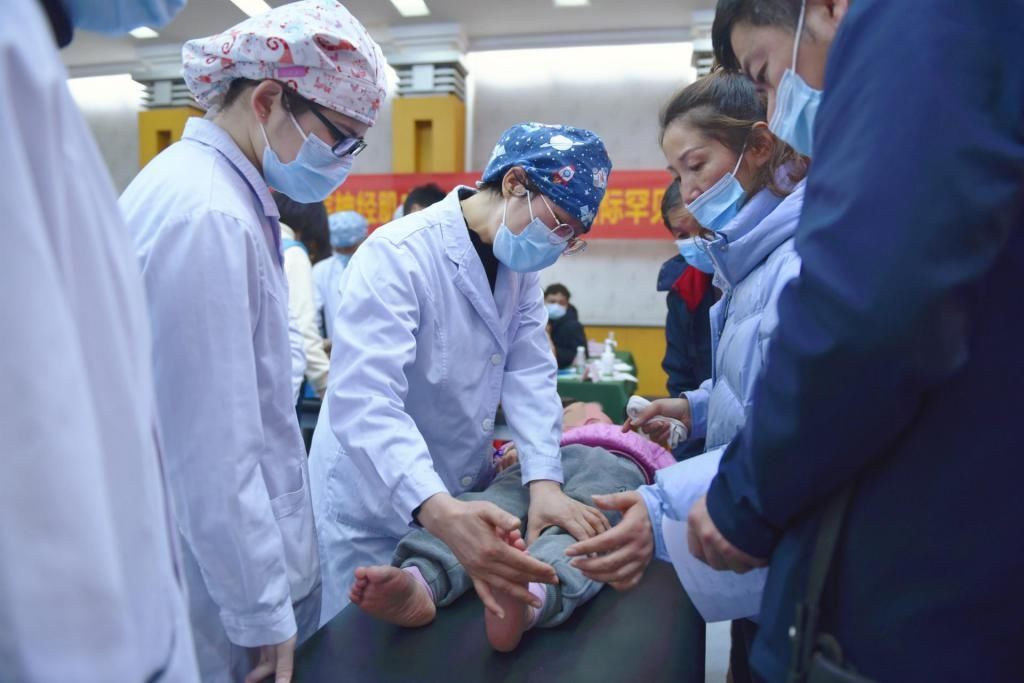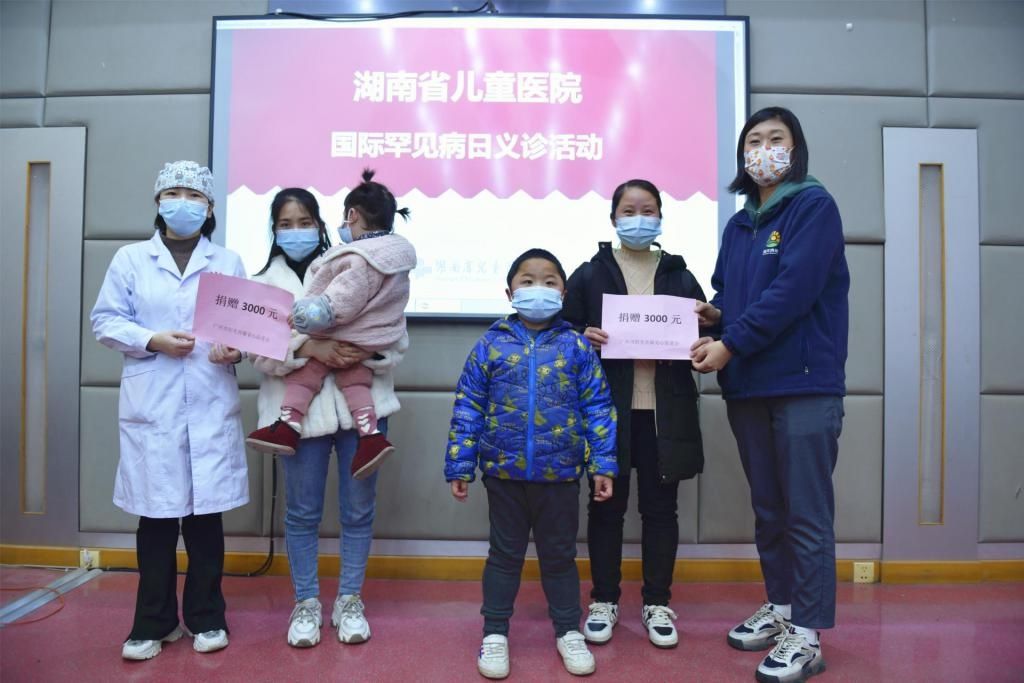On the eve of International Rare Disease Day, Hunan Children’s Hospital held the “International Rare Disease Day” neuromuscular MDT multidisciplinary free clinic. “The child has made great progress, and our whole family is very happy!” On the morning of February 27, Ms. He from Xinhua County, Hunan Province, brought her two-and-a-half-year-old daughter Xianxian (pseudonym) with Spinal Muscular Atrophy (SMA). Participated in free clinic activities at Hunan Children’s Hospital, happily sharing the child’s treatment results and consulting on the next diagnosis and treatment plan. The MDT team, composed of experts from the neurology department, rehabilitation center, orthopedics, digestive nutrition department, respiratory medicine department and other disciplines of the hospital, provided “one-stop” diagnosis and treatment services for 60 children with rare diseases who came to the scene like Xianxian. In terms of food, housing, transportation, etc., systematic evaluation and comprehensive guidance are carried out from follow-up treatment, nutritional support, weight management, bone health, and breathing improvement, to comprehensively help improve the quality of life of children. At the event site, Xianxian and 6 other families also received 3,000 yuan per household from the charity organization.

Spinal muscular atrophy, also known as SMA, has an incidence of about 1 in 10,000. This is a type of disease caused by degeneration of motor neurons in the anterior horn of the spinal cord, resulting in muscle weakness and muscle atrophy. As the disease progresses, muscle weakness can further lead to abnormalities of the skeletal system, respiratory system, digestive system, and other systems, of which respiratory failure is the most common cause of death. On January 1 this year, the official implementation of the new national medical insurance catalogue, the original 700,000 injections of “sky-high” therapeutic drugs dropped to about 33,000 yuan, giving Ms. He’s family new hope. On January 4, Xianxian and 8 other young patients received the first batch of injections at the Provincial Children’s Hospital. At present, Xianxian has received 3 injections according to the course of treatment, and the hospital has completed a total of 113 intrathecal injections for 51 children.
“A child’s little progress is the greatest comfort to parents.” Wu Liwen, deputy director and deputy chief physician of the Department of Neurology of Hunan Children’s Hospital, introduced that Xianxian can now sit stably alone, and the strength of her hands and feet is increasing. , When eating, I can quickly bring the chopsticks to my mouth, and the speed and height of the feet are better.

“For these children and families, it is a subversive meaning.” Wu Liwen said, suffering from spinal cord Children with muscular dystrophy can take medication as soon as they are diagnosed with SMA. The optimal treatment regimen is at diagnosis, on days 14, 28, and 63 after the first injection, followed by maintenance doses every 4 months. After medication, generally as long as there are no complications, life expectancy will not be greatly affected. Moreover, the motor function that the child has lost can be slowly gained. So the value of this treatment is enormous.
Rare diseases are low-prevalence, rare diseases that are generally chronic, severe, and often life-threatening. The World Health Organization defines rare diseases as diseases or lesions that affect between 0.65‰ and 1‰ of the total population. According to the World Health Organization, about 80% of rare diseases are caused by genetic defects, and about 50% of rare diseases can be diagnosed at birth or during childhood.
According to the statistics of Hunan Children’s Hospital, in the past three years, the hospital has treated 84 kinds of national rare diseases, and reported 2,300 cases of rare diseases, mainly in the blood system, nervous system and connective tissue diseases. In April 2021, the hospital was approved to establish the Hunan Provincial Children’s Diagnosis and Treatment Center for Intractable Diseases. In order to improve the diagnosis and treatment capabilities of rare diseases, 33 MDT teams have been established to integrate the high-quality medical resources of the hospital and provide “one-stop” services for patients. At the same time, join the national rare disease MDT team to carry out high-quality new medical technologies such as liver and kidney transplantation, bringing benefits to children with rare diseases in diagnosis and treatment. Constructed a clinical database of difficult and rare diseases, carried out 8 rare disease-related clinical studies, successfully applied for a number of relevant national, provincial, and science and technology projects, published more than 100 related papers, and helped to develop new mechanisms for rare diseases through the integration of industry, academia and research. Discover. Actively connected with public welfare and charitable organizations, and carried out 34 medical charity aids. The next step will be to further do a good job of MDT cooperation for specific diseases, strengthen the implementation of the whole course management of rare diseases, establish a biological sample database of difficult and rare diseases in the province, improve the transformation of clinical research, and provide high-quality and efficient diagnosis and treatment services for children with difficult and rare diseases.

How to detect or prevent rare diseases early, Liwen Wu said, the pathogenesis of each rare disease, and The symptoms and the final prognostic process are different, involving many specialties. In addition to strengthening the learning of professional knowledge and improving the ability of identification and diagnosis for medical staff, parents, as the first responsible person for their children’s health, should pay attention to their children’s health problems, regular physical examinations for their children, and early detection and early treatment are crucial. At the same time, it is the key to do a good job in prenatal examination and prenatal and postnatal care, especially if there is a relevant medical history in the family, you must go to a professional medical institution for prenatal consultation from the beginning of pregnancy preparation.
Due to the small number of patients with rare diseases and limited market demand, drugs for rare diseases are also vividly called “orphan drugs”. In addition, even if there are drugs for rare diseases, the “sky-high prices” of some rare disease drugs are beyond the ability of most people to pay, making patients discouraged and helpless. “Every life has the right to enjoy health and a good life.” Wu Liwen said frankly that the attention of the country, society and ordinary people to rare diseases has reached an unprecedented new height. Many drugs have been developed and marketed, many drugs have entered the domestic market, and prices have also dropped. As a medical practitioner, I feel obligated and motivated to help these rare disease families.
Xia Sheng, reporter of Xiaoxiang Morning News, Yao Jiaqi, Xu Li, Yi Qingmei